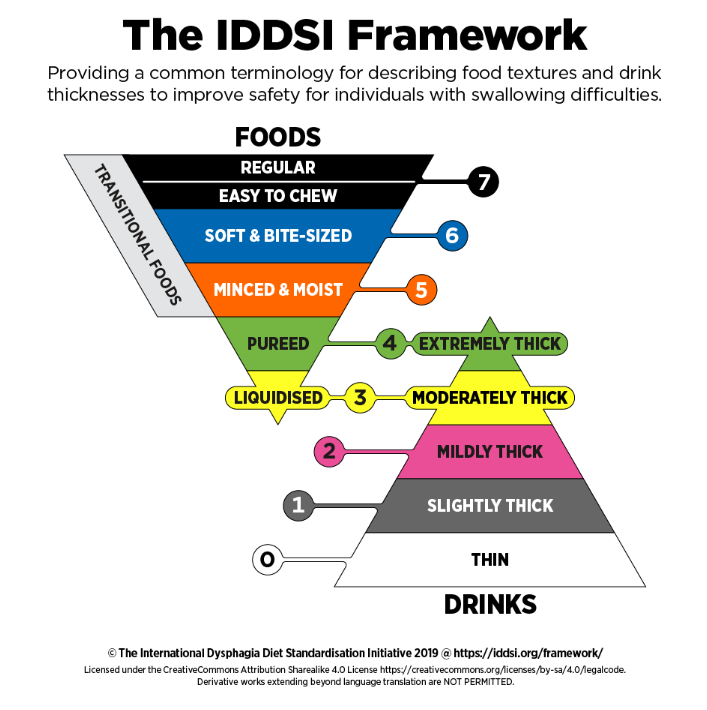 The long-standing dysphagia diet framework is being phased out globally and replaced by the International Dysphagia Diet Standardization Initiative.
The long-standing dysphagia diet framework is being phased out globally and replaced by the International Dysphagia Diet Standardization Initiative.
The IDDSI is an effort to streamline guidelines around modified diets, which are often recommended for people who have dysphagia as they age or after cancer, injury, progressive disease or stroke.
IDDSI was launched to create clear, consistent characteristics and testing methods for modified diets across healthcare facilities. “Following the most up-to-date guidelines is essential as we provide excellent care for our patients with dysphagia,” said Speech-Language Pathologist Sara Keiser, MS, CCC-SLP. “The goal is for all healthcare facilities to follow the new standards to reduce the risk and severity of dysphagia-related complications, and the IDDSI framework supports this goal.”
Sara and Clinical Dietitian Kendra Korner, RDN, LD, helped lead the NKCH IDDSI Implementation Team, which launched in 2021 with staff from Clinical Dietetics, Clinical Informatics, Food and Nutrition Services, Nursing, Nursing Professional Development and Speech-Language Pathology. The team created and designed a new dysphagia menu by formulating new recipes for menu expansion, modifying existing recipes, improving thickened liquid availability and mixing accuracy for staff on the floors and units. Rolled out in February, the IDDSI framework is now assigned to all NKCH patients requiring diet modifications for dysphagia.
The IDDSI framework aims to be culturally sensitive, measurable and applicable to individuals of all age groups in all care settings. The framework provides common terminology to describe food textures and drink thickness in an easy-to-read color and number level system for consistency across every health care facility (see graphic). IDDSI is safer, more efficient and more commercially consistent for patient care. The food levels include improvements and expansion in texture and safety for chewing and swallowing, while the drink levels feature easier-to-understand name changes.
The new framework creates less confusion between patients, caregivers and healthcare professionals and brings increased focus on patient safety. “We are optimistic these improved guidelines and menu options will help support nutrition goals for our patients during their hospitalizations and after their discharges,” Kendra added.